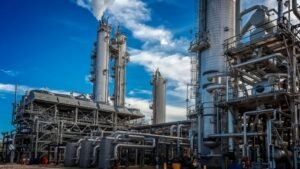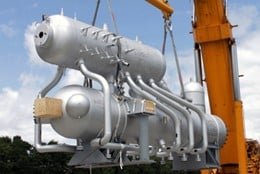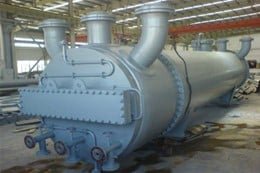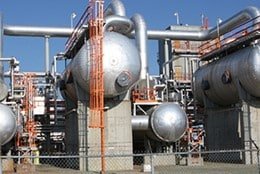The iconic skyline of Alberta’s natural gas sector is marked by labyrinthine tubes and tunnels, pipes and platforms. Atop it all—like candles on the cakes of carbon—are sputters of live flame, alighting the morning sky.
Far more than just a deterrent to low-flying aircrafts (and birds), the powerful heat of the reaction furnace ensures sulfur extraction is maximized, and the purity of outflow is an optimal makeup for cleanliness and machine reliability.
Too Hot to Handle:
Working with sour water means bringing all the good along with the bad. Side reactions inside the reaction furnace will invariably produce unwanted products like CO, H2, COS, and CS2. Luckily, other contaminants such as BTEX, Mercaptans, NH3, HCN, Methanol, and HCs may be destroyed in the reaction furnace with proper calibration and sufficient heat.
While 900℃ (1650℉) is the minimum temperature for flame stability, heats of 1050℃ (1920℉) or above are capable of destroying the unwanted contaminants. Bear in mind the reaction furnace is kinetically limited based on residence time, turbulence, and temperature, as well as burner efficiency.
Through the Fire and Flames:
In our Sulfur Recovery experience, combustion air flow rates are nearly always off by at least 10–20%. While this is standard, we must work to ensure this margin of possible error is not exacerbated. Proper mixture of gasses and the installation of a high-efficiency burner can increase reaction furnace temperatures up to 100℃, which helps to reach the target temperatures mentioned previously.
This is crucial not only for efficiency, but for optimal refinery health. Proper burn-off of ammonia in the reaction furnace is essential, as residuals can carry over to the condensers and converters, bringing with them the risk of forming ammonia salts. These salts will negatively impact heat transfer and recovery efficiency. As with most sulfur recovery unit issues, you won’t know there is a problem until it is too late.
As with any efficient furnace system, management of both inflow and output should be carefully monitored, with changes to procedure made according to the changes in both. Ensure your plant is optimized for the feed it receives. For example, when H2S qualities are low in gas plants, a front side split configuration is often best for ensuring minimal additions of air and nitrogen to the system.
Conclusion:
Sulfur recovery isn’t always easy, but it is undoubtedly important. In the end, you should run your reaction furnace like you would your bathtub: the hotter, the better; the better, the cleaner! Learn more about how we can help you optimize your Sulfur Recovery by contacting us at our website, subscribing to our newsletter, or by giving us a call today.















